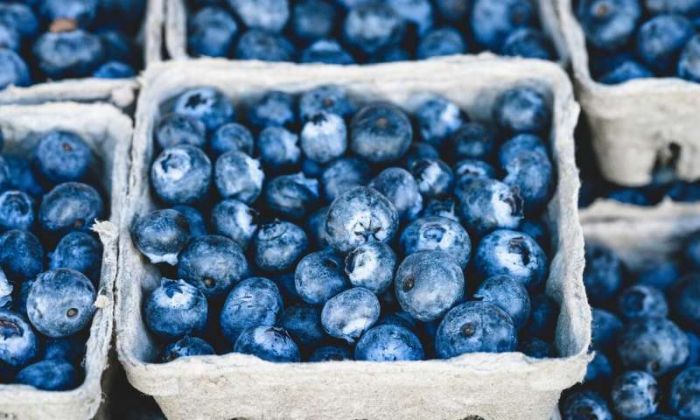Eating blueberries every day improves heart health

New findings published today in the American Journal of Clinical Nutrition show that eating 150g of blueberries daily reduces the risk of cardiovascular disease by up to 15 per cent.
The research team from UEA’s Department of Nutrition and Preventive Medicine, Norwich Medical School, say that blueberries and other berries should be included in dietary strategies to reduce the risk of cardiovascular disease – particularly among at risk groups.
The team set out to see whether eating blueberries had any effect on Metabolic Syndrome - a condition, affecting 1/3 of westernised adults, which comprises at least three of the following risk factors: high blood pressure, high blood sugar, excess body fat around the waist, low levels of ‘good cholesterol’ and high levels of triglycerides.
Lead researcher Prof Aedin Cassidy, from UEA’s Norwich Medical School, said: “Having Metabolic syndrome significantly increases the risk of heart disease, stroke and diabetes and often statins and other medications are prescribed to help control this risk.
“It’s widely recognised that lifestyle changes, including making simple changes to food choices, can also help.
“Previous studies have indicated that people who regularly eat blueberries have a reduced risk of developing conditions including type 2 diabetes and cardiovascular disease. This may be because blueberries are high in naturally occurring compounds called anthocyanins, which are the flavonoids responsible for the red and blue colour in fruits.
“We wanted to find out whether eating blueberries could help people who have already been identified as being at risk of developing these sort of conditions.”
The team investigated the effects of eating blueberries daily in 138 overweight and obese people, aged between 50 and 75, with Metabolic Syndrome. The six-month study was the longest trial of its kind.
They looked at the benefits of eating 150 gram portions (one cup) compared to 75 gram portions (half a cup). The participants consumed the blueberries in freeze-dried form and a placebo group was given a purple-coloured alternative made of artificial colours and flavourings.
Comments:
conditions including type 2 diabetes and cardiovascular disease... eating one cup of blueberries per day resulted in sustained improvements
in vascular function and arterial stiffness – making enough of a
difference to reduce the risk of cardiovascular disease by between 12
and 15 per cent.""... people who regularly eat blueberries have a reduced risk of developing
conditions including type 2 diabetes and cardiovascular disease... eating one cup of blueberries per day resu...See more
